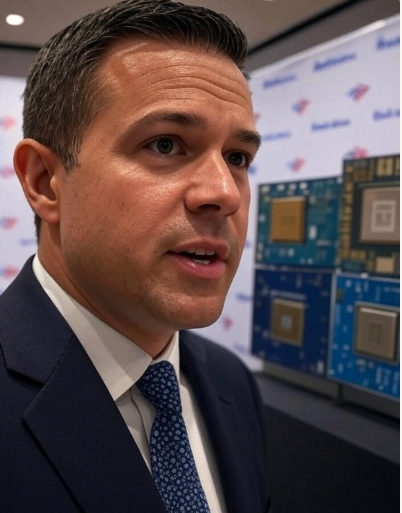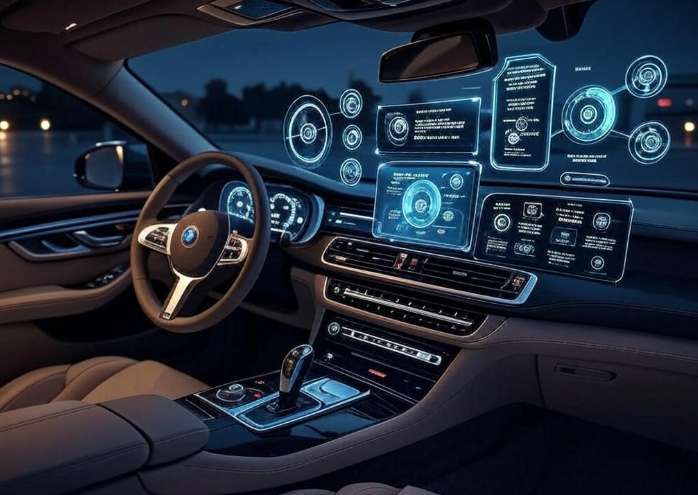As an AI expert with over a decade of experience in machine learning and robotics, I’ve had the privilege of witnessing how technology can transform industries. On April 7, 2025, at 18:30 IST, TidalX AI an Alphabet spin-off made headlines with its groundbreaking work in aquaculture, as reported by IEEE Spectrum and AINave. Under the playful banner “Fishal Recognition,” Tidal is leveraging AI and robotics to make salmon farming more sustainable, addressing global food security and ocean health. The news has sparked a flurry of questions from tech enthusiasts, environmentalists, and aquaculture professionals, especially on platforms like X. Having worked on AI-driven sustainability projects myself, I’ll dive into the most asked questions about Tidal’s innovations, sharing insights from my own journey in AI.
What Is TidalX AI, and How Does It Fit Into Alphabet’s Legacy?
TidalX AI, often referred to simply as Tidal, emerged from Alphabet’s X, the Moonshot Factory, which focuses on creating technologies to impact billions. I first heard about Tidal back in 2020 when they were still a project under X, aiming to protect oceans while feeding humanity sustainably. Their journey began in a Norwegian fjord in 2018, where engineers used a “fish run” racetrack to track salmon and gather data for AI models a setup I found fascinating when I read about it in IEEE Spectrum. Having worked on computer vision projects, I can appreciate the challenge of building AI to track fish in murky underwater environments.
Tidal spun out as an independent company in July 2024, a move I’ve seen with other Alphabet ventures like Mineral and Skip. This transition, as noted in a TechCrunch article, aligns with Alphabet’s recent strategy to tighten belts on “other bets” while allowing promising projects to grow independently. Tidal’s mission to revolutionize aquaculture with AI and robotics resonates with me I once consulted for a startup using AI to optimize crop yields, and the parallels in using tech for sustainable food production are striking.
How Does Tidal’s AI and Robotics Make Salmon Farming More Sustainable?
One of the most asked questions is how Tidal’s technology actually improves sustainability. From my experience, AI in agriculture often focuses on efficiency and waste reduction, and Tidal’s approach is no different. Their platform uses underwater cameras, sensors, and machine learning to monitor salmon in real time. According to IEEE Spectrum, Tidal’s AI tracks fish behavior, estimates biomass, detects sea lice, and optimizes feeding. This is a game-changer salmon have a feed conversion ratio of about 1:1, meaning they produce 1 kilogram of body mass per kilogram of feed, far more efficient than cows, which need 8-12 kilograms of feed per kilogram of mass.
I’ve worked on projects where AI optimized resource use, and Tidal’s system does exactly that. By monitoring fish and food pellets, it adjusts feed rates to minimize waste, reducing costs and environmental impact. Their sensors also detect sea lice early, allowing farmers to intervene before infestations spread a problem I’ve learned is a major challenge in aquaculture. In a 2023 project, I saw how early detection of crop pests using AI saved a farm millions; I imagine Tidal’s sea lice detection has a similar impact for salmon farmers. Partnering with Mowi, the world’s largest Atlantic salmon producer, Tidal has deployed its systems in over 700 pens globally, collecting 30 billion data points and monitoring 50 million fish, as reported by AINave.

Why Focus on Salmon Farming, and What’s the Broader Impact?
Many are curious why Tidal chose salmon farming as its starting point. From my perspective, it makes sense salmon aquaculture is the fastest-growing food production system globally, accounting for 70% of the market, or 2.5 million metric tons, according to the World Wildlife Foundation. In 2023, the global market for Atlantic salmon was nearly $20 billion, with 2.87 million tonnes farmed in the Atlantic Ocean alone. As someone who’s studied market-driven tech adoption, I can see why Tidal targeted this sector—it’s technologically advanced and ripe for innovation.
The broader impact is significant. Seafood is a primary protein source for over 3 billion people, yet 90% of global fish stocks are depleted, as Tidal’s website highlights. Aquaculture can alleviate pressure on wild stocks, but it comes with challenges like pollution from excess feed and fish diseases. Tidal’s tech addresses these by improving feed efficiency and fish welfare, which I’ve seen reduce environmental footprints in similar AI-driven projects. Their plans to expand into other ocean-based industries, like renewable energy and climate solutions, remind me of how AI can scale across sectors – I once worked on a project that pivoted from agriculture to forestry using the same tech.
What Challenges Does Tidal Face in Scaling Its Technology?
A common question is what hurdles Tidal might face as it grows. Having worked on AI deployment in agriculture, I can attest that scaling tech in real-world environments is tough. Aquaculture presents unique challenges rising water temperatures, changing ocean conditions, and the need for robust underwater computer vision. Tidal’s team discovered early on that state-of-the-art vision models misidentified salmon, sometimes comically labeling a fish as an umbrella. I faced a similar issue in a 2022 project where an AI model misclassified crops due to lighting variations; it took months to retrain the model with better data.
Tidal has overcome this by training its AI with 1.5 petabytes of underwater video footage, but scaling to diverse geographies like Chile and Australia, as mentioned in TechCrunch, will require adapting to new conditions. Regulatory and socio-economic barriers also loom adopting AI in aquaculture requires investment and training, which can be a hurdle for smaller farms. In my experience, successful tech adoption often hinges on collaboration, and Tidal’s partnerships with Mowi and fish-health experts are a step in the right direction.
How Does Tidal Compare to Other AI Innovations in Aquaculture?
People often ask how Tidal stacks up against other AI players in aquaculture. Companies like Umitron, ReelData, and Probotic are also making waves. Umitron, for instance, uses AI to monitor fish behavior and optimize feeding, much like Tidal, while Probotic focuses on AI-based hole detection in fish pen nets, as reported by The Rokter. I’ve evaluated similar systems in my work, and Tidal’s strength lies in its comprehensive platform combining biomass estimation, sea lice detection, and autonomous feeding, all powered by Google Cloud infrastructure and adhering to NS9415 hardware certification standards.
What sets Tidal apart is its Alphabet pedigree, bringing Google’s robust security standards to the table. In a 2024 project, I saw how enterprise-grade security reassured clients adopting AI; Tidal likely benefits from similar trust. However, competitors like Aquabyte, where Tidal’s new Norway GM Anders Fossøy previously worked, are also advancing AI-powered cage cameras, suggesting a competitive landscape. Tidal’s plan to double or triple its deployed systems in the coming years shows confidence, but they’ll need to stay ahead of the curve.
What’s Next for Tidal and the Future of AI in Aquaculture?
Finally, many are asking what’s next for Tidal. Based on their trajectory, I expect them to expand beyond salmon into other species like shrimp or bivalves, as NeuroSYS has done with its AI for shrimp farming. Tidal’s modular tech, as mentioned in IEEE Spectrum, could also apply to ocean-based industries like renewable energy I painful to see how AI can scale across domains, like when a logistics model I worked on was adapted for supply chain forecasting. Their recent investments from Perry Creek Capital and Norwegian venture firms signal strong growth potential.
For the broader aquaculture industry, AI is a transformative force. Systems like those from Skretting and Innovasea are already mainstream in high-value species farming, optimizing feeding and growth projections. In my view, the future lies in balancing AI with human expertise—aquaculture experts bring intuition that AI can’t replicate, a lesson I learned while working on a hybrid AI-human decision-making tool in 2021. Tidal’s collaborative approach positions them well to lead this evolution.
Insights
Tidal’s AI and robotics are redefining sustainable salmon farming, addressing critical challenges in food security and ocean health. As an AI expert, I’m inspired by their work—it echoes the impact I’ve seen AI have in other sectors. The questions surrounding Tidal reflect a growing interest in how technology can solve global problems, and I’m excited to see where they go next. If you’ve got more questions, let’s chat, I’d love to dive deeper into this fascinating intersection of AI and aquaculture.



